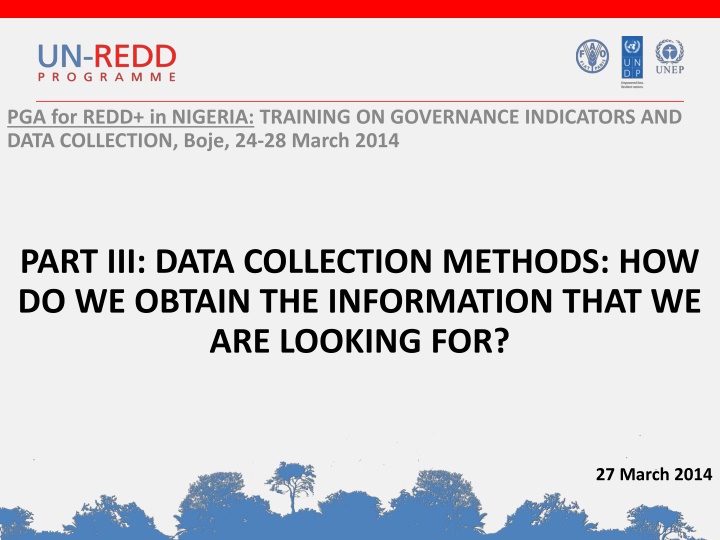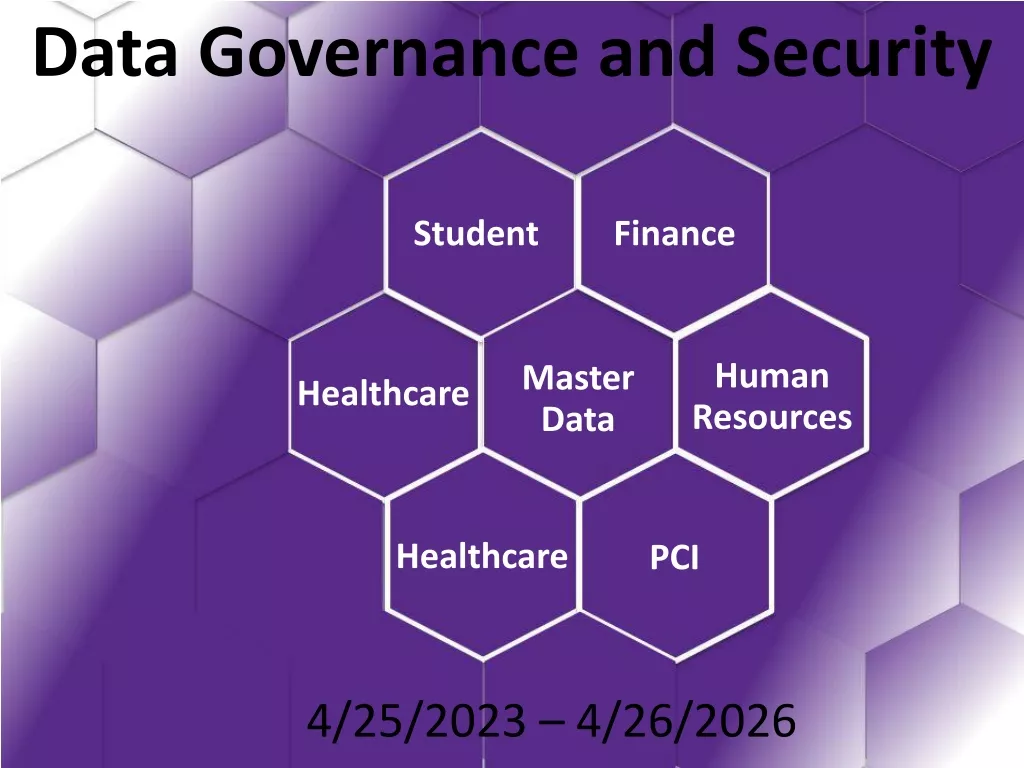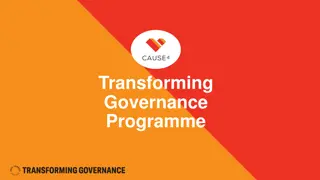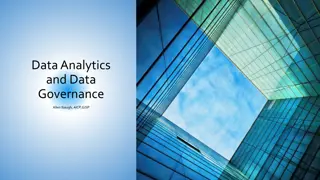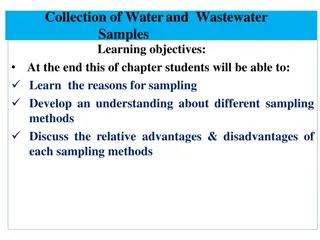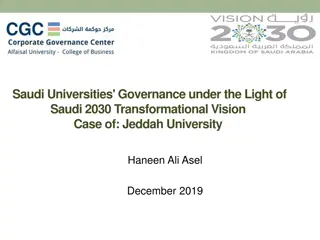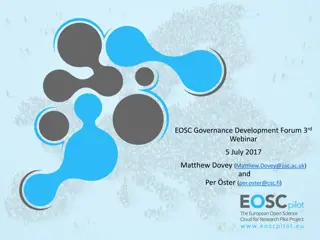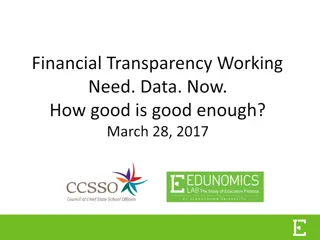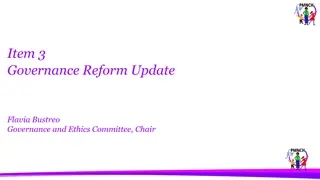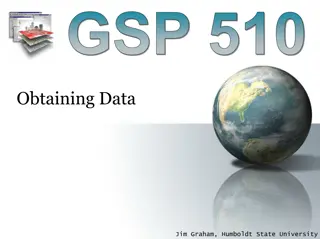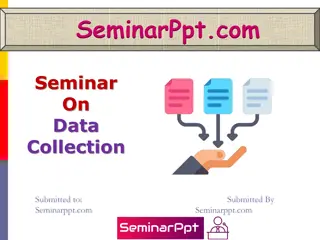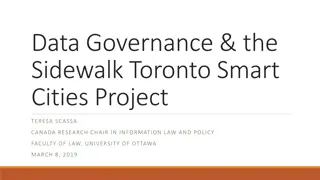Data Collection Methods in Governance: Obtaining Information Effectively
Explore different data collection methods for assessing governance indicators, including the importance of complementary data sources, implications for different types of data, and assessing the supply and demand sides of governance. Learn about primary and secondary data sources and various tools for data collection.
Download Presentation

Please find below an Image/Link to download the presentation.
The content on the website is provided AS IS for your information and personal use only. It may not be sold, licensed, or shared on other websites without obtaining consent from the author.If you encounter any issues during the download, it is possible that the publisher has removed the file from their server.
You are allowed to download the files provided on this website for personal or commercial use, subject to the condition that they are used lawfully. All files are the property of their respective owners.
The content on the website is provided AS IS for your information and personal use only. It may not be sold, licensed, or shared on other websites without obtaining consent from the author.
E N D
Presentation Transcript
PGA for REDD+ in NIGERIA: TRAINING ON GOVERNANCE INDICATORS AND DATA COLLECTION, Boje, 24-28 March 2014 PART III: DATA COLLECTION METHODS: HOW DO WE OBTAIN THE INFORMATION THAT WE ARE LOOKING FOR? 27 March 2014
Complementarity of data sources Important to monitor both the supply and demand for good governance Parallel with private sector: Assessment of the company s charter, balance sheet, internal processes and assembly line OR / AND ? Assessment of whether consumers are actually buying their product, whether they were satisfied with it, and likely to keep on buying it
Implications for data sources? 1) Objective data Qualitative: Administrative sources: Policy and legal documents, codes of conduct, organizational set-up and management systems, processes for decision-making Other narrative reports: Newspaper reports, reports by CSOs 2) Objective data Quantitative: Government statistics, data gathered by domestic NGOs, international organizations and academics, expenditure tracking and budgetary information, audit reports, court records 3) Opinion and experience-based data from citizens, specific groups (MPs), specific institutions, or private sector through surveys, focus groups, etc.
Assessing the supply side of governance Assessing the demand side of governance -% of men and women from Cross River State who have access to REDD+ records -% of men and women from CRS who use REDD+ records (experience- based) -% of men and women from CRS who think REDD records-keeping is done well (opinion-based) Are REDD+ records accurate, timely and comprehensive at local, state and federal level? Are REDD+ records made accessible at local, state and federal levels?
Primary data Household/ Individual Surveys Face to face Mail Telephone Internet Focus Group Discussions Thematic Stakeholders Key informant interviews Secondary data Governmental sources National ministries/ departments States Local governments Non-governmental sources International Organisations, Donors International NGOs Local NGOs Private sector
Advantages and constraints of primary data collection Advantages Direct stakeholder involvement Captures opinions, perceptions, experience Can help in mobilising stakeholders for action Constraints Expensive Time-consuming Requires significant local capacity in survey design, sampling, execution and analysis
Advantages and constraints of secondary data collection Advantages Published data may be more easily available Cost-effective Can be collected in a limited time through desk study Constraints Mostly de jure data May not reflect actual situation or multiple perspectives Needs verification, triangulation for meaningful results
Research methods (for collecting information) 1. Surveys 2. Interviews 3. Focus groups 4. Observation 5. Field tests 6. Analysis of documents
1. Surveys Positive Negative Efficient way of collecting info from a large area / population Unavailability of sampling frames Produces quantitative data (factual or opinion data), which is easily used by policymakers High cost of administering a survey, especially face to face Can identify trends through disaggregation Questionnaire can hinder detailed exploration of a topic ( response categories created by researcher) Can make inferences about a population (random sampling) Cost of surveys brought down if attached to a planned census
2. Interviews Positive Negative Qualitative, useful for preliminary and exploratory More time consuming (data collection, transcription, analysis) Helpful in explaining complex experiences, perceptions, identifying incentives, causes and effects Small sample sizes can t be generalized to entire population (not representative) Reduces researcher bias, gives respondents more control over what to discuss, for how long Interviewers must be well-trained Often uncovers new issues Ideally best if interviews area carried out by the same person
3. Focus groups Positive Negative Quick way of getting in-depth information from a group Focus groups may be affected by intimidation and domination by elites Can get a range of views on an issue Potential of bias in sampling of groups Cost and time-effective (no need for extensive preparation or training) Need clear agenda and skilled facilitator
4. Observation Positive Negative Observing people or infrastructure in context gives greater insight / accuracy Presence of researcher may cause people to act or respond differently Cheap to carry out Bias in observation from researcher s interpretation Requires little training for analysis Amount of time varies
5. Field tests Positive Negative Innovative way of determining effectiveness of certain governance processes or reforms from a user perspective (e.g. use of trained teams compare ability to access information with groups of local volunteers) Small sample sizes can t be generalized to entire population (not representative) Shows how different backgrounds and levels of know-how affect ability to access certain services Timing of data collection varies Cost effective
6. Analysis of documents Positive Negative Necessary at early phase of research to determine available data sources, understand context and issues Disaggregating administrative data is difficult Event-based data: newspaper articles, individual records (e.g. testimonies collected by NGOs), information from independent researchers Event-based data not generalisable, problems of under-reporting Wide range of sources: academic, administrative, NGO, newspaper Many countries have high quality administrative data (e.g. through tax collection, registration for social security, census) Bias of the media needs to be taken into account
Triangulation, a means to verify information The same topic is discussed with different groups of people An issue is analyzed by the same group of people, but using different methods The same group analyzes the issue at different points in time Results from the analysis carried out by one group are shared for discussion with another group Results of the study are shared with the community at the end to validate the findings
